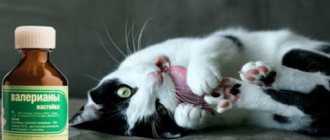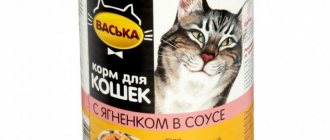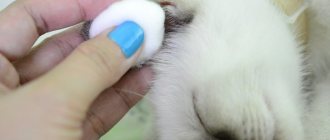For many people, pets are full-fledged members of the family. Dogs, cats, parrots, hamsters, aquarium fish and many other animals have long become something more than just representatives of the animal world. But sometimes, unfortunately, it happens that pets are unwell, and owners need to take urgent measures to cure their pet.
The most common variant of illness in domestic cats is poisoning of various types. Well, the most popular and effective drug for treating poisoning in people, as you know, is activated carbon. That is why owners of domestic cats may very often have a question about whether activated charcoal can be given to cats.
Activated carbon: general information
Made from ordinary charcoal as a result of its heat treatment, this drug has a fairly rich history. Even in ancient times, the beneficial properties of ordinary coal and ash were noticed in the treatment of poisoning of varying degrees of severity. The thing is that the porous structure of coal allows it to absorb toxic substances and remove them from the body.
Nowadays, starch is added to such coal to form crushed coal into tablets and glucose to normalize the functioning of the entire body. It was this drug that was popularly called activated carbon, which is considered an ideal antitoxin.
Activated carbon in veterinary medicine
From all of the above, we can conclude that this drug is very useful not only for people, but also for cats. The most popular reasons why it is not only possible, but also necessary to give your cat activated charcoal are the following diseases and symptoms:
- poisoning;
- flatulence;
- diarrhea;
- increased acidity of gastric juice;
- allergic reactions;
- renal failure.
If your pet exhibits one or even several symptoms, you should not even think about whether activated charcoal can be given to cats. However, it is worth mentioning that the most convenient forms of this drug for pets are suspension, paste and powder.
Adverse reactions
Rarely, pets may develop constipation in response to drug therapy.
Mostly activated carbon and Polysorb are well tolerated by the cat’s body and do not cause side effects. However, some pets experience a deterioration in the absorption of hormones, vitamins, microelements and other beneficial components. It is possible that prolonged constipation may occur, as a result of which breakthrough diarrhea or hemorrhoids often develop. Activated carbon can also affect the activity of gastric juice, reducing it. The safest side effect is considered to be a change in the color of stool to black.
Treatment of poisoning
As mentioned earlier, activated carbon is the best remedy for treating poisoning. Unfortunately, cats get poisoned quite often, and this is due to two reasons. Firstly, these animals are very curious; they need to know what kind of powder is scattered on the floor and what is in the jug on the top shelf of your closet. Well, secondly, the cleanliness of cats can play a cruel joke on them. For example, if a toxic substance gets on your pet’s fur, then after some time it will definitely be in the animal’s stomach.
The main symptoms of poisoning are:
- vomiting and diarrhea;
- copious amounts of saliva;
- lethargy;
- disorientation in space;
- dilated pupils;
- hard breath.
If at least two symptoms are present, owners should already be wary of possible pet poisoning. In this case, you must contact your veterinarian and take your pet to him for examination. If this cannot be done, you can give activated charcoal to the cat; it will not be unnecessary, but will only be beneficial.
Prevention remedy
Also, very often people are interested in whether cats are given activated charcoal only in case of poisoning. The answer is clear - no. A very popular use of this drug is for preventive purposes.
Very often, veterinarians advise cat owners to give this remedy to their four-legged friends as a prophylaxis and to prevent possible poisoning and health problems. Systematic use of activated carbon significantly reduces the risk of contracting any infection. The best option is a course of ten days every three months. Thus, this is another answer to the question of whether it is possible to give activated charcoal to a cat.
How does the product affect diarrhea in cats?
The main active substance of the drug is black coal. It has no odor or any taste and quickly absorbs liquid. White coal is commercially available, which differs in dosage and contains silicon dioxide.
If you place the tablet in water, it will immediately begin to draw it into itself, acquiring a pasty consistency and increasing in size.
Thus, the product fights pathogenic microflora, neutralizing microorganisms in the intestines. Charcoal prevents the spread of infection .
Harmful bacteria are eliminated from the body naturally along with feces.
The drug and the bite of the blister beetle
In addition to banal poisoning, diarrhea and vomiting in a cat can be caused by other reasons. One of them is the bite of a blister beetle. This small and seemingly harmless insect is very dangerous for small animals, since its bite in certain situations can even kill a horse.
The thing is that the body of this beetle contains poison, which, if it comes into contact with the skin, leads to a burn and the subsequent formation of characteristic blisters. If you notice such a blister on your pet's skin, you should immediately take him to the veterinarian. But before that, be sure to give your cat activated charcoal, which will fight the infection while you are on the road.
Dosage
So, this drug has quite useful properties for the body of an adult and even a small kitten. Thus, after you understand the need to treat the animal, the next logical question arises: “How much activated charcoal should I give to a cat if it is poisoned?”
Despite the fact that the structure of the body of a cat and a person is slightly different, the dosage follows the same principles. So, in order to figure out how much activated carbon to give to a cat, you need to know the following proportion: one tablet per 10 kg of your animal’s weight. That is, to treat a pet weighing 5 kg you will need half a tablet of coal.
If you initially purchased this drug in the form of a powder or suspension, and your pet’s weight does not exceed ten kilograms, then the amount of activated carbon should be taken at the rate of 1 g of powder per 1 kg of cat’s weight. For the average animal you need to take about 6 g of powder.
What an owner should do if a cat is poisoned
To treat poisoning in a cat, you should act quickly and follow a number of recommendations from veterinarians.
At the first symptoms of poisoning, you should consult a veterinarian
- Call the vet.
- A poisoned cat should be taken to a well-lit and ventilated place.
- The owner must wear long sleeves to protect his hands from contact with poisons. After all, cats can show aggression when they are sick – biting and scratching.
- Induce vomiting in the cat. This must be done immediately after the animal eats poisonous food. To do this, you need to give your pet 3% hydrogen peroxide (1 tsp per 1 kg of weight). The portion is divided into several doses. Usually after the second the cat starts vomiting. You can give the animal water with vomit root (in the form of syrup, sold in a pharmacy), or saline solution.
- You should not feed the cat.
- After vomiting, give “Activated carbon” at the rate of 0.25 g per 1 kg of pet’s weight.
- Drink more water.
- If toxic poisons remain on the fur, then it is better to wash the pet so that it does not lick off the remaining toxic substances.
A cat can become poisoned by catching a rat that has had contact with the poison.
“Activated carbon” and isoniazid (rat poison) poisoning
Isoniazid is used by dog hunters to bait cats and dogs. If an animal is accidentally poisoned by this substance, you should:
- call the veterinarian;
- induce vomiting immediately;
- feed the animal a laxative (so that the poison does not have time to be absorbed into the digestive tract);
- give “Activated carbon” (before and after vomiting);
- give “Pyridoxine” - vitamin B6 (if animal haters live in the next apartment, it is better to have this drug in the first aid kit);
- give Corvalol - 3 drops per 4 kg of weight;
- solder with water.
Examination by a veterinarian
If you are poisoned by rat poison:
- call the veterinary clinic;
- urgently induce vomiting, give an enema or give a laxative;
- feed “Activated carbon”;
- use an antidote - vitamin K (necessary for blood clotting);
Table. Permitted analogues of “Activated carbon”
| Names of analogues | Main active ingredient | Peculiarities | How to take for cats |
| "Polyphepan" | Lingin hydrolytic and activated carbon | Several hundred times higher than the adsorption capabilities of Activated Carbon. Can be taken for preventive purposes | For diarrhea, 1 teaspoon 30 minutes before meals 3 times a day for 7 days |
| "Enterosgel" | Polymethylsiloxane polyhydrate | Has a large number of contraindications. More successfully removes toxins and allergens from the animal’s body. In case of poisoning, it can help the first time | ½ teaspoon for a kitten, 1 teaspoon for an adult cat. Diluted with water 1:3. Give 2 times a day before meals 2.5 hours or after |
| "Smecta" | Dioctahedral smectite | Eliminates diarrhea and gastrointestinal disorders after the first use. Does not cause side effects. Has no contraindications | ½ teaspoon for a kitten, 1 teaspoon for an adult cat 2 times a day. Diluted with water 1:2 |
| "Polysorb" | Silicon dioxide | 30 times more effective than Activated Carbon. High adsorption characteristics. A large number of indications for use. Relieves the animal from nausea, vomiting, abdominal pain, diarrhea within 4 minutes | Diluted with 20-35 ml of water. The norm is 1 mg per 1 kg of cat weight. Can be given up to 5-6 times a day |
Blister beetle poison and “Activated carbon”
The blister beetle is a kind of assistant to agricultural workers. Its purpose is to destroy plant pests. It has a bright red color. The insect never bites. Its cunning lies in the release of a toxic substance - contharidin. A few hours after the poison enters the mucous membranes of the mouth, in the gastrointestinal tract (when a beetle is bitten or swallowed), ulcers with purulent discharge form on the walls, which leads to the rapid death of the pet.
Blister beetle
If immediately after a cat swallows an insect, you feed it Activated Carbon, then the likelihood that the animal will survive increases.
When treating cat poisoning with Activated Carbon, the dosage should be observed. An incorrect ratio can lead to an overdose and unwanted effects, one of which is severe constipation.
How to give?
As you already understand, determining the need to use this drug and its dosage are not the most difficult tasks. The real difficulties will come when you think about how to give your cat activated charcoal if it is poisoned.
So, the required amount of activated carbon in powder form must be dissolved in boiled water so that the consistency of the finished solution resembles liquid sour cream. Then the prepared solution must be injected into a syringe.
Well, then the fun begins. You need to pick up the cat and place it on your lap, face up. As you may have guessed, the solution from a syringe must be injected into the cat’s mouth. This will be quite difficult to do, since any animal will struggle and will not want to open its mouth voluntarily.
Knowledge of the cat skeleton will come to the rescue here. As you know, a cat’s teeth are not located along the entire perimeter of the mouth; they are not located at the base of the tongue. Thus, if you gently pull the cat's lips down, you will be able to easily and, most importantly, painlessly for the cat, insert the tip of the syringe into the animal's mouth and inject the solution there. No more than 2 ml of solution should be injected at a time, and such manipulations should be carried out 3-4 times a day when the first signs of poisoning appear. As soon as your pet's condition improves, you should start giving whole or broken tablets.
However, do not forget that severe poisoning occurs in pets. In this case, pouring an activated carbon solution into your mouth will not be enough. In this regard, a logical question arises: “How to give activated charcoal to a cat with diarrhea?” The answer is a cleansing enema.
To do this, you need to dissolve up to 20 g of powder in 100 ml of water and inject the prepared solution into the rectum. This option will be the most effective way to remove all harmful substances from the pet’s body.
Overdose of “Activated Carbon” for cats
You cannot treat cats with Activated Carbon if they:
- stomach bleeding;
- ulcers in the gastrointestinal tract;
- sorbent intolerance.
It is worth noting that prolonged use of the drug and excess dosage threaten problems with stool - constipation. Dry and dense feces can form a plug, leading to intestinal obstruction.
Abuse of sorbents can cause problems with stool in the animal.
Attention! If the animal does not go to the litter box for more than a day, you should consult a veterinarian.
If you uncontrollably feed your four-legged pet charcoal, this will help flush out nutrients, vitamins, and minerals from the body, as well as reduce the production of gastric juice, the main task of which is to break down fats and proteins.
Pet owners should remember that dark gray coloration of feces is a normal reaction after taking Activated Charcoal.
Activated carbon darkens cat feces
As for an overdose, its main symptom is constipation. How can you tell if your cat has problems with bowel movements? Here are the main symptoms of temporary intestinal obstruction:
- the animal strains in the tray, but feces do not come out, and the cat may meow loudly;
- abdominal pain;
- when palpating the pet’s abdomen, a compaction is noted;
- feces are dry and cracked.
To prevent side effects, you should follow the dosage and give the animal water (1 tablet 10 ml).
Activated carbon is safe for pregnant cats
Is it possible to feed Activated Carbon to pregnant or lactating cats?
Veterinarians recommend treating lactating and pregnant cats with the drug. The active substance of the drug is not absorbed by the gastrointestinal walls and does not penetrate into the blood, and therefore does not pose any danger to kittens in the womb.
Important! Activated carbon should not be given to cats for preventive purposes.
Contraindications and side effects
Despite the very noticeable benefits, this drug still has some side effects. For example, long-term use of charcoal can lead to constipation. Activated carbon is also contraindicated in cats with gastric ulcers. In addition, this drug should not be combined with other antitoxic drugs, since the result of this combination may be unpredictable.
In conclusion, veterinarians are often asked whether activated charcoal can be given to cats during pregnancy? Since this drug is not absorbed into the intestines, it is absolutely harmless for both pregnant and lactating animals.
During pregnancy
Despite the fact that the expectant mother is experiencing severe stress, she should be given the drug if necessary. Activated carbon has no effect on the body.
It acts as a natural sorbent, removing toxic substances after going to the tray. The medicine is also safe for kittens and the cat's future offspring.
ATTENTION! The only exception is that activated charcoal should not be given for diarrhea after childbirth or during vomiting during pregnancy. These signs are in no way related to poisoning.
Owners often use the drug for preventive purposes. This is fundamentally incorrect and has no effect on the body.











